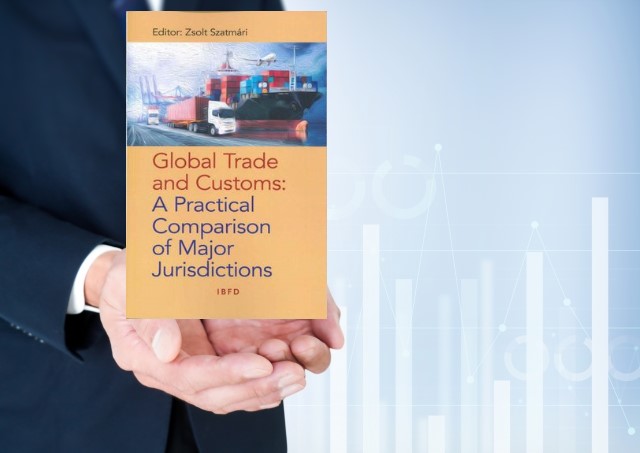Shibata wrote in the book “Global Trade and Customs”(published by IBFD). You’ll find information about trade and customs around the world..
- 2020.07.20
- International tax Trade & Commerce
- catch-all regulation, customs, epa, free trade, fta, global trade, IBFD, returned goods, rules of origin, tariff, tariff code, tpp11, vat

Shibata wrote in the book “GLOBAL TRADE AND CUSTOMS” (published by IBFD).
You’ll find information about trade and customs around the world. The contents of is as follows.
Chapter 7 Japan
Introduction
7.1. Classification of goods
7.1.1. Introduction
7.2. Rules of origin
7.2.1. Relevance of rules of origin
7.2.2. Free trade agreements
7.2.3. Wholly obtained goods
7.2.4. Last substantial transformation
7.2.4.1. Value-added method
7.2.4.2. Change in tariff classification
7.2.4.3. Manufacturing or processing operation
7.2.4.4. Insufficient working or processing/Non-qualifying operations/Minimal operations
7.2.4.5. Cumulation
7.2.5. Practical aspects and challenges
7.2.6. Proofs of origin
7.2.6.1. Country of origin certification under the Japan-EU FTA
7.2.6.2. Country of origin certification under TPP11
7.3. Customs value
7.3.1. Transaction value
7.3.1.1. Amounts included in the transaction value
7.3.1.2. Elements to be included and excluded
7.3.2. Alternative valuation methods
7.3.2.1. Identical or similar merchandise
7.3.2.2. Deductive method
7.3.2.3. Computed method
7.3.2.4. Fall-back method
7.3.3. Most typical challenges
7.3.3.1. Related-party pricing
7.3.3.2. Price adjustments
7.3.3.3. Exchange rate
7.3.3.4. Returns and repairs
7.3.3.5. Advance ruling on customs value
7.4. Goods brought into domestic territory
7.4.1. Persons involved in importation
7.4.1.1. Importer of record
7.4.1.2. Customs brokers
7.4.1.3. Special statuses
7.4.2. Tariff quota
7.4.3. Non-resident customs clearance
7.4.4. Documents to be presented during the importation process
7.4.5. Payment of the customs debt
7.4.5.1. Before permit
7.4.5.2. Special exception import declaration system
7.4.5.3. Calculating the customs debt
7.4.6. Exemptions
7.4.7. Returned goods
7.4.7.1. Tax reduction on goods exported for processing or repair
7.4.7.2. Re-import tax exemption
7.4.7.3. Tax reduction on products produced from raw materials previously exported
7.4.8. Remission or repayment of customs debt
7.4.9. Customs clearance and release into free circulation
7.4.10. VAT/GST rules concerning import
7.4.11. Excise duties and other consumption taxes
7.4.12. Anti-dumping and countervailing duties
7.4.12.1. Anti-dumping
7.4.12.2. Countervailing duties
7.5. Goods leaving the customs territory
7.5.1. Persons involved in export
7.5.2. Documents presented during the export process
7.5.3. Export control
7.5.3.1. Catch-all regulation
7.5.3.2. Infringement of security export control
7.5.3.3. Export control in the United States
7.5.4. Export duty
7.5.5. Procedural formalities
7.5.5.1. Special exceptions for export declaration
7.5.5.1.1. Specific exporter
7.5.5.1.2. Specific manufactured cargo exporter
7.5.5.1.3. Re-export tax exemption
7.5.6. VAT/GST rules concerning export
7.6. Special procedures
7.6.1. Bonded transport
7.6.1.1. AEO forwarder
7.6.2. Customs and bonded warehouses
7.6.2.1. Designated bonded area
7.6.2.2. Bonded storage yard
7.6.2.3. Bonded factory
7.6.2.4. Bonded display area
7.6.2.5. Integrated bonded area
7.6.3. Customs free zones
7.7. Customs authority audit
7.7.1. Legal remedies
7.7.2. Penalties and interest
7.7.3. Criminal sanctions
If you would like to know more about the content,
Please contact us. ⇒ Click
IBFD Official Web site ⇒ Click here


